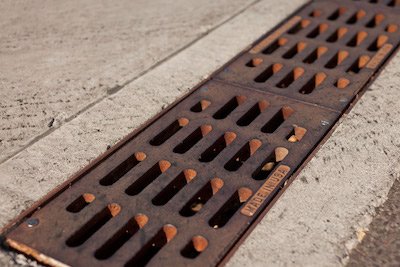Channel Drains
Channel Drains
Channel drains, also known as trench drains or linear drains, are a popular and effective solution for managing surface water runoff. Designed as long, linear channels with grates on top, they collect and redirect water to desired locations, keeping surfaces safe and dry. But where should these drains be placed, and why are they essential? Let's delve deeper.
Best Places to Install Channel Drains
Driveways
Driveways are prone to water collection, especially if they’re flat or have been improperly graded. A channel drain near the garage entrance can prevent water from seeping inside or pooling at the driveway’s base.
Patios and Decks
Rainwater or overflow from pools and spas can accumulate on patios. Installing a channel drain can help safeguard the area, maintaining the structural integrity of the patio and preventing slippery surfaces.
Pool Areas
Channel drains around pool perimeters manage splashed and spilled water, reducing slip hazards and directing excess water away efficiently.
Walkways and Entrances
Walkways, especially those near downspouts, can benefit from channel drains to prevent puddling and ensure safe passage.
Parking Lots
Large surfaces like parking lots can gather significant amounts of water during rains. Strategically placed channel drains can manage this runoff and prevent flooding.
Sporting Areas
Tennis courts, basketball courts, and other sports areas require smooth, dry surfaces for optimal safety and performance. Channel drains ensure these areas remain dry and usable even after rain.
Commercial Complexes
In commercial areas with high foot traffic, like shopping malls or business parks, channel drains can help in keeping walkways and entrances free of water.
Key Reasons to Install Channel Drains
Water Management
The primary function of a channel drain is to manage and redirect water, preventing accumulation on surfaces. Proper drainage ensures areas remain functional and reduces potential water damage.
Safety
Pooled water can lead to slippery surfaces, posing a risk of slips and falls. Especially in high traffic areas or places like pools, managing water is crucial for maintaining safety.
Structural Integrity
Water accumulation can harm various surfaces. For example, in driveways, pooled water can weaken the asphalt or concrete, leading to cracks. On patios, water can lead to wood rot or damage to the foundation. Channel drains help in prolonging the lifespan of these structures.
Aesthetics
Puddles of water or water stains can detract from the beauty of landscaped areas. A proper drainage system ensures outdoor spaces remain pristine and attractive.
Prevention of Soil Erosion
Water runoff, especially in sloped areas, can lead to soil erosion. This can damage landscapes and lead to the loss of topsoil. Channel drains can redirect water, protecting the landscape.
Property Value
A well-drained property is attractive to potential buyers, as it indicates good maintenance and reduces potential future repair costs.
Environmental Considerations
Properly managed water can be directed towards areas where it benefits the environment, like rain gardens or recharging local groundwater. It also prevents the direct flow of contaminants from surfaces into natural water bodies.
Versatility
Channel drains come in various designs and materials, from discrete slot drains to decorative grates, ensuring they not only function well but also blend seamlessly with the surrounding architecture and landscape.
Channel drains are an invaluable addition to various outdoor spaces. Their versatility, combined with their effectiveness in managing water, makes them a preferred choice for homeowners, businesses, and municipalities alike. When deciding on installing a channel drain, consider the area's size, the expected volume of water, and aesthetic preferences. With proper placement and installation, channel drains can offer a long-term solution to water management challenges, enhancing the functionality and beauty of any space.
Channel Drain Questions and Answers
What is a channel drain?
A channel drain, also known as a trench or linear drain, is a type of floor drain with a long, linear shape. It collects and redirects surface water through its channel to a designated discharge point.
Where are channel drains typically installed?
Channel drains are commonly installed in driveways, patios, pool areas, walkways, parking lots, sporting areas, and commercial complexes to manage surface water runoff.
How do channel drains work?
Channel drains have a grated top that allows water to enter. The water then flows through the channel and is directed to an outlet, often connected to a larger drainage system or discharged to a safe runoff area.
Why should I consider installing a channel drain?
Channel drains effectively manage surface water, preventing pooling, flooding, and potential water damage. They also enhance safety by reducing slippery surfaces and maintain the structural integrity of hardscapes.
Are channel drains expensive?
The cost of channel drains varies based on size, material, design, and installation complexity. While some basic models are reasonably priced, high-end or custom designs can be more expensive.
How do I clean and maintain a channel drain?
Regularly clear the grate of debris. Periodically, remove the grate and clean the channel using a brush or hose. Ensure the outlet is not clogged to maintain optimal flow.
What materials are channel drains made of?
Channel drains can be made from various materials, including plastic, concrete, stainless steel, and cast iron. The choice often depends on the application, aesthetics, and budget.
Can I install a channel drain myself?
While some DIY enthusiasts might tackle channel drain installation, it's advisable to consult or hire a professional to ensure proper grading, flow, and connection to existing drainage systems.
Do channel drains prevent debris from entering the drainage system?
The grated design of channel drains filters out larger debris, preventing clogs. Some models come with catch basins or strainers to trap finer debris.
How do I choose the right channel drain for my needs?
Consider the area's size, expected water volume, location (e.g., driveway vs. poolside), desired aesthetics, and budget. Consulting a drainage professional can also provide insights tailored to your specific needs.

